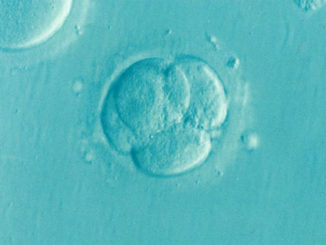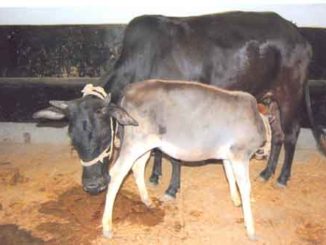An old adage says, “India lives in villages” as more than 65% of Indian population lives in rural area. Also, more than 70% Indian rural households own livestock. So, the livestock sector can play a vital role in socio-economic development of farmers. The dairy animals are kept commonly for meeting daily needs of milk and milk products. Many farmers had invested huge sum of money by adopting dairy farming as a commercial enterprise. Scientists are also toiling day and night for developing new technologies for the dairy animals. Despite rapid advances in the animal husbandry technologies and their role in improving dairy sector, productivity of this sector is quite low i.e. wet average kg/day in indigenous cows, crossbred cows and buffalo have been recorded as 1.98, 6.75 and 4.50 kg respectively. However, for making the dairy enterprise profitable, good reproduction and good production are just like two sides of a coin. The reproductive ability of the animal is one of the key elements in a dairy herd. Any condition which hampers the production from dairy farm is of concern for dairy farmers.
The fertility among dairy cattle is decreasing. For dairy animals, fertility means the ability of an animal to conceive and maintain pregnancy if served at the appropriate time in relation to ovulation. Failure to establish a successful pregnancy could arise from failure to exhibit or detect oestrus, failure to ovulate, luteal inadequacy, embryo or fetal loss. Anoestrus, repeat breeding, cystic ovarian degeneration, uterine and tubal disorders have been observed as the most common gynecological problems causing infertility in cattle and buffaloes.
Infertility means a temporary disturbance in reproductive function wherein the animal cannot become pregnant. Normally a cow with a healthy reproductive tract with normal function should calve every year i.e. with in 12 months. The healthy buffalo should calve with in 13-14 months. The Infertility causes economic losses to the farmers due to increase in inter-calving period, increase in service period, lesser calves in life of an animal (delay in calving) and decrease in milk production. Concisely, lesser the reproductive losses at a dairy farm, more is the profitability of the venture. Additionally, there is an economic loss that incurs on animal due to maintaining of an unproductive animal.
For profitable dairy farming, following objectives should be met
|
SN |
Reproductive parameters |
Objectives for profitable dairy farming |
|
1 |
Heat detection Percentage |
≥ 70 % |
|
2 |
Percentage of cows inseminated after 21 days |
˃ 80 % |
|
3 |
Number of services required for pregnancy |
< 2 % |
|
4 |
Follicular cyst |
< 10 % |
|
5 |
Endometritis |
< 10 % |
|
6 |
Culling of animals due to reproductive disorders |
< 10 % |
Management of Infertility at dairy farm
Managing infertility at dairy farm is a cumbersome procedure. However, careful application of scientific knowledge and after following expert advice, the infertility can be curtailed. Following are the tips to curtail infertility at dairy farm.
- The longitudinal axis of animal shed should be from east to west direction. For proper air circulation, the height of roof of animal shed should be at least 10-12 feet. Always remember that dairy animals must have comfortable housing. Reproductive efficiency of animals decreases if animals feel stress. Keep the animals in sheds in such a way that animals remain free from any kind of stress.
- Provide proper nutrition right from birth of the animal. The accurate nutrition should be given to animals according to age, production status and reproductive state. The nutritional requirements of cow are different from buffalo; nutritional requirement of heifers are different from pregnant animal. Always consult an expert for formulation of ration for dairy animals.
- Provide 1-1.5 kg balanced concentrate feed to heifers. This much diet is required for proper development of genitalia and expression of heat signs.
- Provide balanced concentrate diet to the animals according to parity and milk production level. Avoid overfeeding of oil seed cakes to dairy cows, as it can result in more embryonic mortality. Avoid feeding of mould infested grains/green fodder and soiled wheat straw to dairy cows. If diet has more grains, then the animals become fatty.
- Mineral mixture supplementation should be an integral part of diet @ 2% of ration. Do not feed the local brand mineral mixture or mineral mixture without any specifications or company details. Mineral mixture with trace minerals should be preferred. Trace minerals such as Copper, Chromium, Iron, Manganese help in proper development of genitalia and exhibition of proper heat signs. Prefer area specific mineral mixture for feeding to dairy animals.
- There should be good supply of green fodder to the animals throughout the year. For conservation of green fodder during abundance season, hay and silage should be made.
- Provide clean and fresh drinking water to the animals. The water manger should be in covered area. This prevent water from heating and also becoming dirty. Check that water available at dairy farm should be potable.
- Seasonal management of dairy animals should be there. Provide adequate shade or cooling systems to animals to reduce heat stress. During summer season, allow buffalo to wallow in river or pond. Tie the animals under tree. Provide fountains and exhaust fans in cow sheds.
- During colder months (winter season), prevent the animals from direct chilling effect of air by providing curtains of jute, rugged cotton, tarpaulin etc. to shed.
- During rainy season, due to increased humidity, increase air flow in cow sheds by fans.
- Dairy animals should be provided with drugs for prevention of worms/ticks/internal parasites.
- Always go for reproductive examination of heifers before first insemination. Do not inseminate animals with congenital defects such as unilateral/bilateral, aplasia/hypoplasia of ovary, fallopian tubes or uterus. These diseases are transmitted to next generations and such animals should be culled without any delay.
- Inseminations of underweight, malnourished, anaemic animals should never be done. For indigenous cattle and Jersey cattle, minimum body weight should be between 225-250 Kg, for H.F and crossbred cattle the body weight should be between 250-275 Kg and for buffalo, the minimum body weight should be 300 Kg.
- Two months before calving, the pregnant animal should be provided with good quality green fodder and balanced diet.
- For bringing animals earlier in to heat, stop suckling and wean the calf.
- Dairy manager and other workers working at dairy farm should be well aware about heat signs. The heat signs in the dairy animals are – bellowing, excitement, more physical activity by loose animals, frequent urination, oedema at vulva, redness of internal membrane of vulva, clear cervico-vaginal mucus discharge from vulva, less green fodder intake, less milk production, mounting by/on other herd mates. The animal in oestrus stands still (standing heat), which is most important sign of heat. Average time of standing heat is 15-18 hours and during this time, the animal in oestrus allows other herd mates to mount 20-50 times and duration of each mount is 3-7 seconds. Always remember that heat (oestrus) in animals is for some specific limited period. If the dairy manager is able to detect animal in heat during this time and if he is able to make necessary arrangement for mating of animal in heat, only then there is conception.
- In addition to being a heat sign, the cervico-vaginal mucus discharge also inform about uterine health. Animals exhibiting turbid or discoloured mucus discharge should not be inseminated. Contact a qualified Veterinarian for treatment of such animals.
- Only timely heat detection is in the hands of the farmer. Make the heat detection as an integral routine practice at dairy farm. Ask the workers to spend some time with animals for heat detection during morning and late evening.
- Do not allow Quack/Layman to inseminate the dairy animals. For success of artificial insemination, semen should be deposited at right time, at right place by right person.
- Right time of insemination is very important as both sperm and egg have definite life span. Conception occurs only when there is union of sperm and egg. If animals are not inseminated at right time, it may lead to conception failure. Inseminate the indigenous/local cows (heat period = 12- 24 hours) according to AM.-P.M. rule i.e. if a cow comes in heat in morning, inseminate in the same evening and vice versa. Inseminate the exotic/crossbred cow (heat period = 24-30 hours) in mid to late heat. Double insemination should always be done with the gap of 12-24 hours after first AI in crossbreds. Some dairy owners skip oestrus due to negligence or laziness. If AI is done before the start of oestrus, then sperm gets aged and dies before the ovulation. If AI is done after passing of heat, repeat breeding may occur as ovum dies before reaching of sperms at place of fertilization (at fallopian tube).
- Do not use same bull again and again for breeding in same cow.
- Always keep proper breeding records of individual animal in written form. Do not depend on memory or hearsay. Always write daily information in the breeding register or enter the data in assigned excel sheet. Information’s available from the breeding records are of utmost importance in guiding an animal breeder to take future course of action for increasing fertility level of herd. Some of the information available from breeding and calving records could be used for suitable remedial measures for maintaining high level of fertility. The date of insemination, Bull number/name should be written in breeding register.
- After seeing from breeding register, go for pregnancy diagnosis of inseminated animals 2.5-3 months after insemination
|
The content of the articles are accurate and true to the best of the author’s knowledge. It is not meant to substitute for diagnosis, prognosis, treatment, prescription, or formal and individualized advice from a veterinary medical professional. Animals exhibiting signs and symptoms of distress should be seen by a veterinarian immediately. |







1 Trackback / Pingback